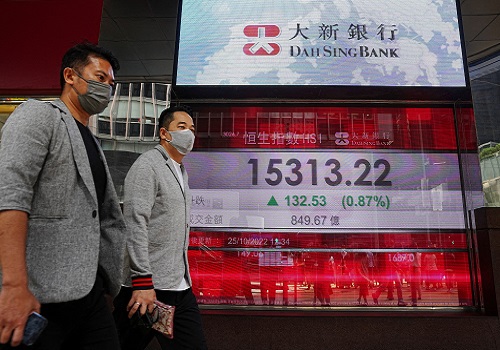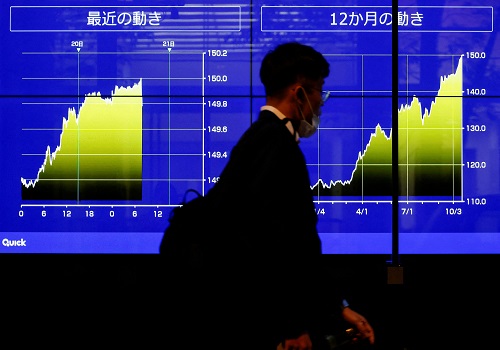Asia shares subdued, dollar on a high as Fed looms

Follow us Now on Telegram ! Get daily 10 - 12 important updates on Business, Finance and Investment. Join our Telegram Channel
SYDNEY - Asian markets were in a pensive mood on Wednesday as shell-shocked investors waited to see just how aggressive the Federal Reserve would be on rates, with many fearing drastic action would risk tipping the world into recession.
Treasury yields hit decade highs and the dollar a 20-year peak as futures implied it was near certain the Fed would hike by 75 basis points to a range of 1.50-1.75% later on Wednesday.
That would be the biggest increase since 1994, and markets already have rates reaching an eye-watering 3.75-4.0% by the end of the year.
"Against a backdrop of sky-high inflation, rising rates, and growing recession concerns, the S&P 500 has had its worst start to the year since 1962," noted analysts at Goldman Sachs.
"A likely coming peak in inflation is probably not sufficient to see the bottom, and that similar past drawdowns have only ended when the Fed has shifted towards easier policy."
That could be some time away so they recommend investors reduce portfolio duration and increase exposure to real assets.
With so much priced in, a few brave investors were looking for bargains early Wednesday and S&P 500 futures edged up 0.4%, while Nasdaq futures rose 0.6%. EUROSTOXX 50 futures added 0.3% and FTSE futures 0.2%.
MSCI's broadest index of Asia-Pacific shares outside Japan firmed 0.2%, but is down sharply on the week.
Japan's Nikkei lost 0.6%, though sentiment was helped by a survey showing an improvement in confidence among Japanese manufacturers.
Data on Chinese retail sales and industrial output for May were a little better than forecast, but still showed the drag from coronavirus lockdowns.
Authorities in Beijing warned on Tuesday that the city of 22 million was in a "race against time" to get to grips with its most serious outbreak since the pandemic began.
Bond markets rallied a shade after their recent hammering, with 10-year Treasury yields dipping to 3.43%, from Tuesday's peak of 3.498%.
Two-year yields stood at 3.38%, after touching the highest since 2007 at 3.456% overnight. Given many U.S. borrowing rates are linked to yields, financial conditions have already tightened markedly there even before the Fed hikes.
DOLLAR HAS THE YIELD ADVANTAGE
Treasury yields are also the benchmark for bonds across the globe, so financial conditions are tightening pretty much everywhere. That is a major headwind for consumer spending power, while pressuring emerging market countries that borrow in dollars.
It has also tended to boost the U.S. dollar, which hit a 20-year high against a basket of currencies, led by big gains on the low-yielding Japanese yen.
The dollar was trading at 135.27 yen, having reached heights last visited in 1998 at 135.60.
The latest surge came after the Bank of Japan ramped up its bond buying to keep yields near zero, even as much of the rest of the world tightens policy.
The euro was holding on at $1.0440, not far from its May trough of $1.0348.
The single currency has found some support from a hawkish turn by the European Central Bank, but is weighed by signs of stress in local bond markets. Yields for more indebted members, notably Italy, have climbed much more quickly than for Germany fanning worries about EU fragmentation.
Surging yields and a sky-high dollar have been a burden for gold, which was near its lowest in a month at $1,816 an ounce. [GOL/]
Oil prices edged up after the Organization of the Petroleum Exporting Countries (OPEC) stuck to its forecast that world oil demand will exceed pre-pandemic levels in 2022. [O/R]
Brent was 22 cents firmer at $121.39, while U.S. crude rose 20 cents to $119.13 per barrel.












 320-x-100_uti_gold.jpg" alt="Advertisement">
320-x-100_uti_gold.jpg" alt="Advertisement">












